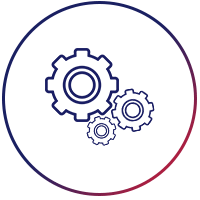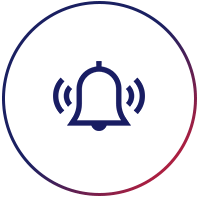Over the last few months, Opsgenie has grown to become the tool of choice for many teams that are new to operating always-on services as well as those who have been left disappointed by alternative solutions. To give you a better idea of how Opsgenie is generating value for the users, we have highlighted the top ten reasons why Dev and Ops teams are choosing Opsgenie.
Flexibility to adapt to any workflow
When it comes to responding to incidents, no two teams work exactly alike; seasoned IT and Dev teams tend to handle alerts differently based on their source, their payload as well as the time of day that problems occur. Opsgenie has a flexible rules engine to enable teams to work the way they want. For example, when an alert is triggered after hours, Opsgenie can notify all team members if it’s urgent, or delay until business hours if it’s low priority. This flexibility ensures every alert gets the attention it deserves.
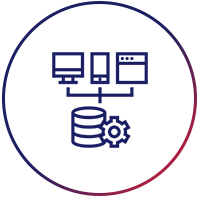
Seamless integration across Atlassian tools for end-to-end management
Opsgenie has deep bi-directional connectivity with other Atlassian products, providing an end-to-end incident management solution.
- You can create Jira Software or Jira Service Desk issues from within Opsgenie, ensuring needed tasks are documented and tracked.
- You can trigger Opsgenie alerts and escalate action when issues are created in Jira Software or Jira Service Desk, improving response time.
- The status of third-party services monitored with Statuspage can be displayed in Opsgenie, providing a single view into the health of systems you depend on. What’s more, Opsgenie can notify the on-call person when these third-party services have an incident.
- When incidents occur, Opsgenie can post changes to Statuspage, keeping customers and stakeholders aware of the issue and status updates.
More meaningful alerts to take faster action
With Opsgenie’s deep integrations, users can reformat alert messages to make them easily understandable and normalized regardless of their source. For Example, an AWS Cloudwatch Alert that states:
Maximum ApproximateNumberOfMessagesVisibleGreaterThanOrEqualtoThreshold 4.0 for QueueName Production
can be reformatted to something easier to read, like:
The Production Message Queue has more than three messages in it.
This custom message can be used for all notifications (voice, SMS, email, and mobile push). Additionally, you can add tags and optional fields to your alerts and attach charts, logs, runbooks, and more to give context and enable recipients to determine the best course of action.
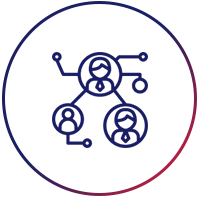 Role-based access to scale easily across teams
Role-based access to scale easily across teams
Opsgenie empowers teams to create and edit schedules, rules, and policies on their own. Rather than relying on specific account administrators, users can create custom roles with granular permissions, so teams can make needed changes without the red tape. Efficiencies compound as teams scale, saving time across the organization.
 End-to-end monitoring capabilities
End-to-end monitoring capabilities
Failures can occur anywhere in your Dev/IT environment. So how can you tell if your monitoring systems are doing their job? Opsgenie Heartbeats ensures that monitoring tools are active and connected. When an absence of a signal is detected within a specified timeframe, Opsgenie instantly flags the problem.
 Secure on-premises applications
Secure on-premises applications
It’s not uncommon for teams to use a mix of on-prem and cloud-based monitoring and ITSM tools. Integrating these systems often means opening firewall connections and exposing the host server to the public internet. This introduces risks that most organizations would rather avoid. As a result, on-prem solutions stay siloed and users are forced to make manual updates and copy/paste data between systems.
Opsgenie solves this issue with the Opsgenie Edge Connector (OEC), which allows for secure and seamless connection via on-premise systems, including Jira Server, Nagios, Solarwinds, and more. All connections are outbound, so there’s no need to open risky inbound ports and protocols to the internet. You’ll also be able to trigger custom scripts via OEC, allowing alert responders to quickly run executables that assist with alert enrichment, troubleshooting, and automated remediation actions.
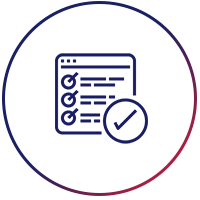 Insightful reporting to learn from every incident
Insightful reporting to learn from every incident
Incidents can be chaotic and stressful, but they always offer the opportunity to improve. Opsgenie tracks the entire lifecycle of alerts and incidents and aggregates them into powerful reports. Reports enable you to track the source of most alerts, evaluate team performance, and measure how well on-call workloads are distributed – without ever having to leave the app. Available analytics include:
- Operational efficiency
- User and team productivity
- On-call work distribution
- Service and infrastructure health
- Post-incident analysis
- Conference attendance and efficiency metrics
Powered by Looker®, Opsgenie reports can be filtered to focus on specific areas of concern, and users can drill down to the underlying data with a single mouse click.
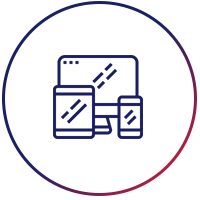 Opsgenie Actions to accelerate remediation
Opsgenie Actions to accelerate remediation
Teams who operate always-on services need to respond to problems quickly to prevent small issues from becoming major outages that affect customers. Remediation often involves a known set of actions on the affected systems or infrastructure, but until now they have required manual, repetitive intervention. Opsgenie Actions offers an easy way to automate these manual tasks directly from the Opsgenie console or mobile app.
For example, Opsgenie Actions can execute AWS Systems Manager (SSM) automation documents to adjust AWS resources, such as starting an EC2 Instance. If parameters are required, Opsgenie Actions can prompt the user via pick lists, checkboxes, and freeform text. If you use other automation tools, no problem – Opsgenie Actions can also integrate with a variety of third-party software by triggering REST endpoint.
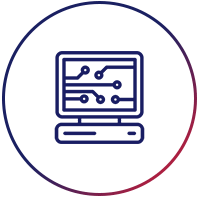
Edge Encryption to ensure data security
Incidents are stressful enough without having to worry about data security – enter Opsgenie Edge Encryption. This secures the communication of your alert and incident information as it travels to and from Opsgenie’s cloud service. With Edge Encryption, you control the keys that encrypt and decrypt sensitive information in Opsgenie.

Better pricing. Period.
You can save three to five times the cost when choosing Opsgenie over the competition. As you increase the number of users, your cost savings grow (see chart below). For example, a 100-person team paying list price for PagerDuty Enterprise would pay $9,900 per month, while the equivalent Opsgenie plan would cost only $2,350 per month. And unlike PagerDuty, Opsgenie provides unlimited stakeholder licenses included with its Enterprise plan, so everyone in your organization can stay in the loop on the status of incidents. If you’re just getting started, the choice is a no-brainer; Opsgenie offers free plans for up to five users.
About iZeno
iZeno was founded in 2003 to provide enterprises with best-in-class technology solutions they need to keep their business running seamlessly. With a team of 70+ in-house innovators, we have delivered over 500 Enterprise Solutions, implemented and optimized to enable smarter insights. Our team draws on industry experiences in accomplishing a portfolio of mission-critical applications, integrating DevOps, Cloud, CRM, Data Analytics, and other leading technologies with our clients’ existing IT frameworks. With leading presence in the region, headquartered in Singapore and operation in Malaysia, Indonesia, Thailand and Philippines, no project is too complex for us, and our team is always ready for a new challenge.


